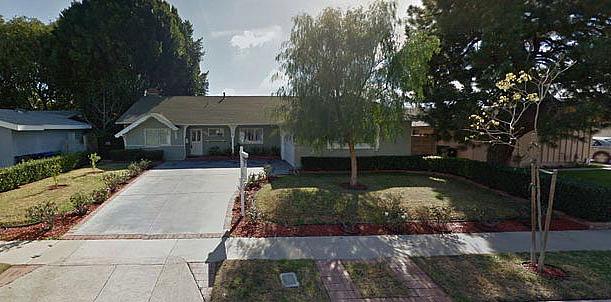Why are people dying at California residential care facilities?

Google Street View image of the Aacres group home in Los Angeles, where resident Dawn Ritz was killed in 2017.
Dawn Marie Ritz used to compete in track and field as a Special Olympics athlete. She enjoyed water skiing, eating hamburgers and fries, and listening to classic oldies. She called everyone “honey.”
Ritz functioned at about a third grade-level during her adult life, according to family, and “wouldn’t harm a flea.”
Yet the 61-year-old woman was killed after she was stabbed repeatedly with a kitchen knife at an adult residential care facility for developmentally disabled individuals in Los Angeles in 2017.
California licensing regulators ultimately cited the Aacres facility for several deficiencies, including enabling access to the knife and inadequate staff supervision, that were described as a threat to the health and safety of residents. The facility was also levied a civil penalty of $15,000, the maximum allowed by law, for her death.
Vulnerable loved ones, including the developmentally disabled, are often placed in adult residential facilities to get specialized, around-the-clock care when family members are unable to care for them. Proponents note that these facilities offer residents the ability to develop relationships with others and a chance to work together to learn to be more independent. But a series of tragic deaths at these care facilities in recent years may point to systemic deficiencies and underscore the need for substantial reforms.
A cursory online media review reveals other shocking cases of possible neglect and abuse related to deaths at such facilities in recent years, including:
- A man shot three developmentally disabled men in his care in August of 2016 before setting fire to his Temecula-area group home and fatally shooting himself. The fire ended up killing a fourth developmentally disabled man and burned all 5 people “beyond recognition.” (Riverside Press-Enterprise)
- A 19-year-old non-verbal client of a group home in Simi Valley in Southern California walked away from a facility in June of 2017, and was later struck and killed by a car. (Ventura County Star)
- Five residents with disabilities were trapped and died in a group home that caught fire in Monterey County in 2011. Lawsuits alleged that the defendants under-financed the care home’s operation, employed unqualified staff and failed to update and safely maintain the operation. They also alleged that there was no sprinkler system installed. (Monterey Herald)
- Two men were involved in a murder-suicide at a group home for those with mental illness in San Bernardino in 2014. (NBC Los Angeles)
For my 2020 California Fellowship project, I will take a comprehensive look at the issue of deaths at certain adult residential care facilities in California from a health and safety standpoint. Utilizing records from the state, I will examine recent deaths in which health and safety code violations were suspected or found to have played a role.
My project for the Southern California News Group, which will consist of multiple articles and a podcast episode, aims to answer the following questions: How prevalent are such deaths at adult residential facilities? What kinds of residents are most vulnerable? What are the main reasons for the deficiencies? What role do things like staff turnover, employee screening, training and pay, financial resources and oversight play in these deaths? And most importantly, what can be done to overcome such deficiencies in order to avoid similar preventable deaths?
The family of Dawn Ritz will never get her back. They will never hear her call them honey again. But by delving into the scope of what may be a systemic problem – along with potential solutions -- perhaps we can help bring about change.
As Dawn’s brother once told me, “I would like to see that her death not be in vain.”

